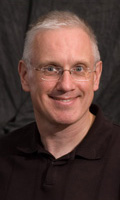Martin Berzins
Martin Berzins
Biography
Martin Berzins is a multi-disciplinary Computational Science researcher whose research cuts across Applied Mathematics, Computer Science and Engineering and is focused on the development of partial differential equations software for solving challenging engineering problems from a variety of applications on extreme-scale computers.
He is a Professor of Computer Science in the School of Computing and in the Scientific Computing Imaging Institute at the University of Utah and a Visiting Professor at the University of Leeds. He graduated in Mathematics at the University of Leeds in 1978 and obtained a Ph.D. in Numerical Analysis there in 1982. From 1982 until 2002 he was a Lecturer, Senior Lecturer, Reader, Professor in Scientific Computing and finally the Research Dean for Engineering at the University of Leeds. He was also the co-founder of the Computational PDEs unit at Leeds. Dr Berzins is a Fellow of the Institute for Mathematics and Its Applications in the UK and a Chartered Mathematician.
In 2003 he moved to the University of Utah, where he was Associate Director (2003-2005) and then Director of the School of Computing (2005-2010). From 2005 until 2014 he was co-Editor in Chief of Applied Numerical Mathematics. In 2012 he became Recipient Program Manager of the US Army Research Laboratory Collaborative Research Alliance in MSME ( Multiscale multi-disciplinary Modeling of Electronic Materials), that brings together nine universities in undertaking electronic materials by design. In 2013 he became the Computer Science lead in the DOE NNSA PSAAP2 Carbon Capture Multidisciplinary Simulation Center at the University of Utah.
A Portable Applications Driven Approach to Scalability on Present and Future Exascale Systems.
The present uncertainty in computer architectures requires software design to allow applications codes to both be able to scale across 20K to 100K nodes and to be able to run portably on a range of possible nodal architectures with a variety of processor technologies being involved, ranging from i86, ARM, GPU to possibly even FPGA. At the same time it may be helpful to use challenging applications to validate the software solutions and to ensure that they are realistic.
The Uintah software has been under development at the University of Utah for almost 20 years. The asynchronous many task-based approach that it now employs has proved to be exceptionally robust at enabling complex engineering applications to run at scale. The approach adopted by Uintah has been tested on a broad class of challenging engineering applications and on a broad range of architectures. Scalability results will be shown and challenges relating to scaling globally coupled problems considered through the use of adaptive mesh refinement will be shown.
Furthermore, the move to new and different architectures requires that the approach used has not only the ability to execute tasks asynchronously but to deal with memory hierarchies and the issue of portability from standard i86 architectures to GPUs and to a broad range of other possible architectures. The approach based upon the Kokkos portability library that enables this process in Uintah will be described It will be shown how Kokkos makes it possible to build a simple clean loop level interface that enables the loops themselves to execute efficiently on different architectures.
The challenge of porting Uintah to a very different sort of architecture is described through a feasibility study on the Sunway TaihuLight. Lessons for porting to future exascale architectures will be considered.
